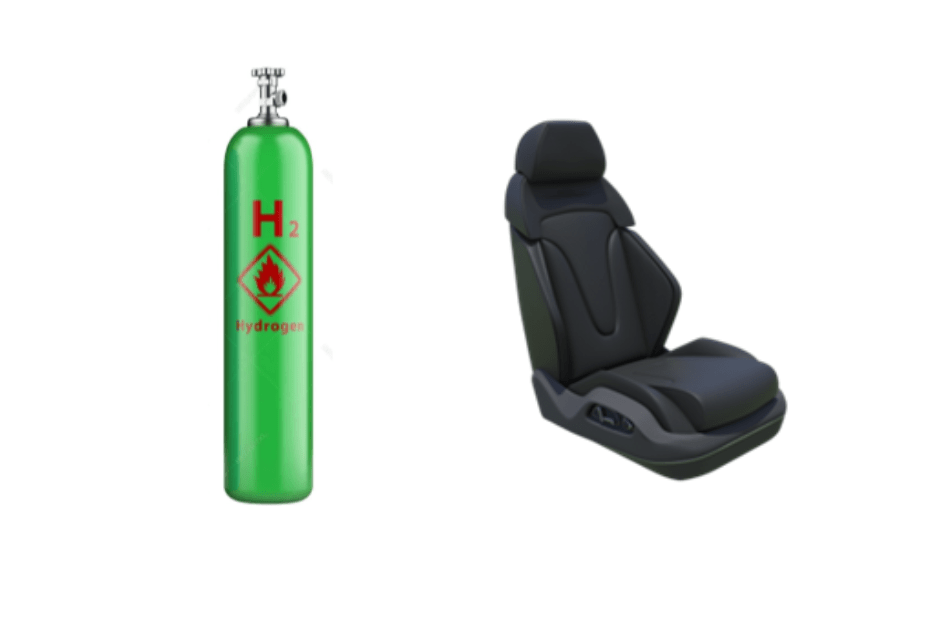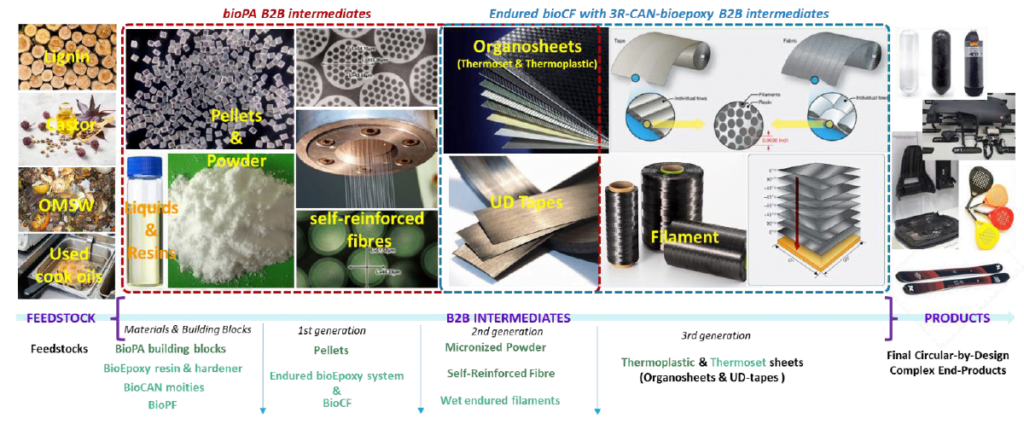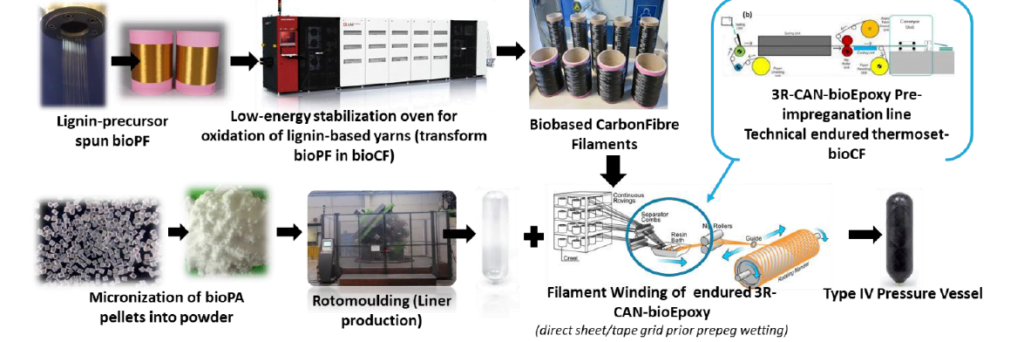Functionality based on Modularity.
The CUBIC project proposes the development of a portfolio of intermediate products that will be validated under two specific biobased fully circular and recyclable demo cases:
- a compressed H2 gas storage cylinder (gas type IV H2 vessel)
- a seat structure of the automotive sector

On the one hand, CUBIC proposes a new design for the gas type IV H2 vessel. Type IV vessels are the most modern and lighter products made by multimaterial composite thermoset structures. CUBIC concept will combine a bio-PolyAmide liner (through a cheap & flexible in design unconventional process) mechanically and chemically recyclable, with an endured (3R-CAN-bioepoxy) BioCF (bio carbon fibre) wrapping cover, which can be reprocessed into other organosheets and B2Bs with heat and pressure.
On the other hand, CUBIC project proposes a new concept of high-tech monomaterial thermoplastic composite for engineering applications based on self-reinforced bioPA core-structures, infused by a bioPA finishing layer, easing the recyclability of the parts and the valorisation of the bioPA chemistry.

Case 1: Type IV pressure vessel storing H2 gas.
The demonstration vessel will be de-manufactured as follows: first, the endured cured bioCF wrapping layer will be cut and separated from the bioPA liner. Due to the incorporation 3R-CANs, the whole wrapping can be re-shaped into an organosheet by applying heat and pressure due to its reversible properties. This will be evaluated for replication purposes as a sustainable layer in skies and padel racquets. Additionally, other applications in other sectors will be screened such as reinforcing structure for construction beams, ceilings, or technical floors. The bioPA liner will be micronized and recycled to produce new liners keeping the value in the chain.

Case 2: automotive seats.
The seat demonstrator will be composed of a mixed flow of bioPA grades. As these grades can´t be sorted, the whole part will be subjected to a sustainable chemical recycling process (by using commercial biobased solvents) in order to recover the different building blocks. These 2nd/3rd generation building blocks will be characterized to be re-introduced as circular feedstock to produce new transport seats under the same self-reinforced concept, as well as for further applications in the same or other sectors (e.g. medicine, orthopedics, urban furniture, construction, etc.).

CUBIC R&I Overall Activity in steps.
- Research related to the Epoxy resin system (biobased resin + dynamic epoxy moieties + dynamic hardener moieties as integration of CANs)
- Synthesis of biobased polyamide building blocks and polymerization routes
- Development of mechanically improved biobased CF for dry and wet manufacturing
- Development of bioPA B2B intermediate 1st, 2nd & 3rd generation structures
- Development endured of bioCF based B2B 1st generation structure
- Eco-design and manufacture of complex circular biobased end-user prototypes
- Recycling, valorisation, and upcycling of the recovered products
Ιn conclusion, the CUBIC project develops and demonstrates novel biobased materials, 100% recyclable by design, manufactured as B2B intermediate semi-finished products. They can be used either individually or assembled in the final end-user product in order to replace current complex thermoplastic and thermoset structures. The overall objective of these new bioproducts is to provide an alternative biobased solution to the manufacturing industry by boosting green and digital transformation.
